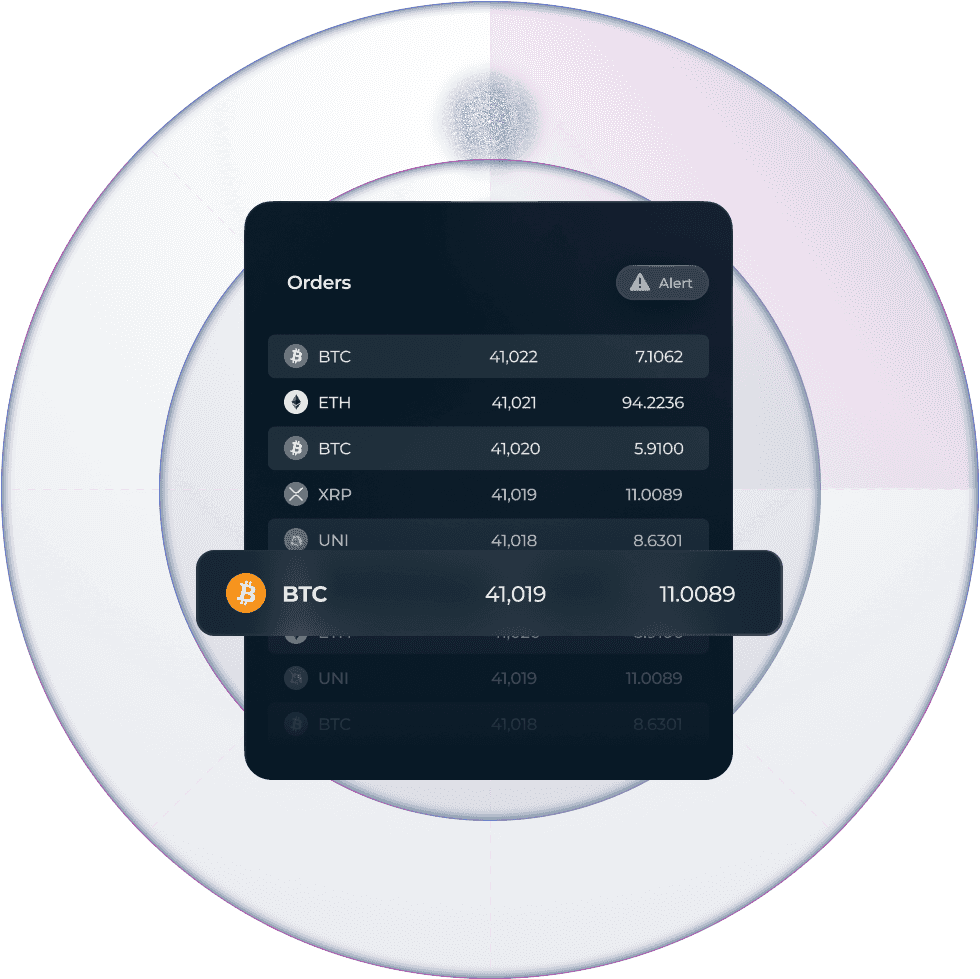Research & Blogs
The Impact of SigNet’s Closing on Crypto Trading
November 08, 2023
How CoinRoutes helps our clients navigate the increase in fragmentation
As most of you are doubtless aware, over the past week, both of the 24/7 instantaneous networks used to transmit US Dollar balances between crypto exchanges have been closed. Silvergate Exchange Network (SEN) closed late last week and the SigNet platform offered by Signature Bank closed on Sunday night.
These networks allowed arbitrageurs to instantly move dollars from exchanges where prices were high to those where prices were low, helping to keep the market more efficient. It is no surprise, therefore, that, post closure, the spread in prices for Bitcoin, Ether and other crypto assets across exchanges has increased for dollar based trading.
In the following chart, we show the last week of average spreads between the high bid and low offer across the major exchanges. Note that we excluded Gemini from this analysis as pricing on that exchange was wildly divergent over the weekend and would have made this analysis significantly more extreme.
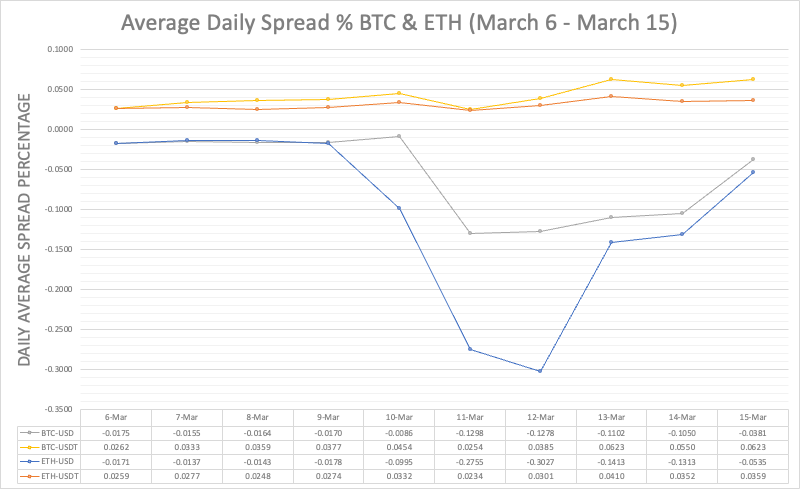
As you can see from the table, the spreads in the markets for Bitcoin and Ethereum priced in USDT (Tether) barely moved, while the spreads in both Bitcoin and Ethereum traded in US Dollars moved dramatically higher at first, and the spreads are still at elevated levels. This is a direct reaction to the fact that inter-exchange arbitrage has become slower and more difficult for proprietary traders active on those markets without SEN and SigNet. The weekend was particularly difficult (bank wires are closed), with spreads moving from between 1 and 2 basis points the week before Signet was shuttered to as high as almost 13 basis points for Bitcoin and 30 for Ethereum on Sunday. By Wednesday of this week, the spreads had narrowed to just under 4 basis points for Bitcoin and over 5 for Ethereum, which is still more than a 300% increase from before.
We have seen the same impact on most crypto assets, although those that trade predominantly in USDT show a slightly smaller impact. As examples, here is a chart of the inter-exchange spreads for Solana and XRP:
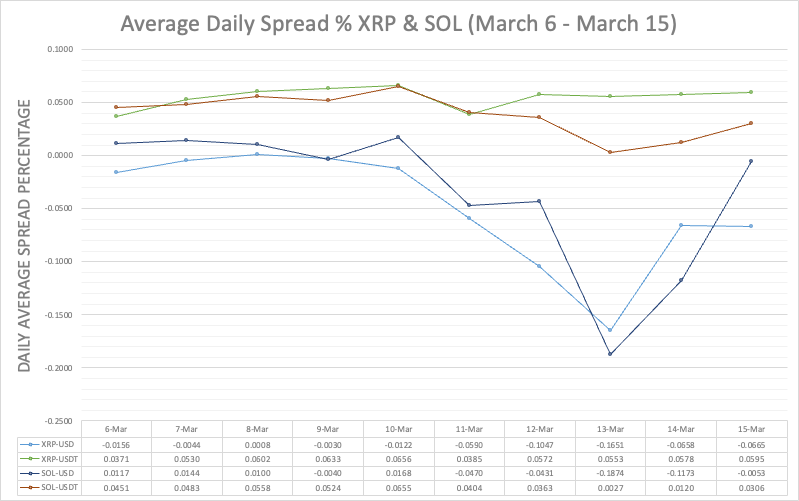
It is important to note that wider inter-exchange spreads, while a symptom of less market efficiency, can be overcome with good technology that prices orders with full knowledge of the prices on all exchanges, regardless of which exchanges one has assets on. The reason this works is that there is a strong mathematically proven tendency for exchange prices to mean revert towards the average of all exchanges. Using CoinRoutes data, we analyzed this as well and see that, if anything, that has become even stronger. The following chart shows a graph of the consolidated best bid and offer for Bitcoin-USD pricing this week, charting the best bid and best offer across exchanges and the relative market share of those exchanges for 1 full Bitcoin:
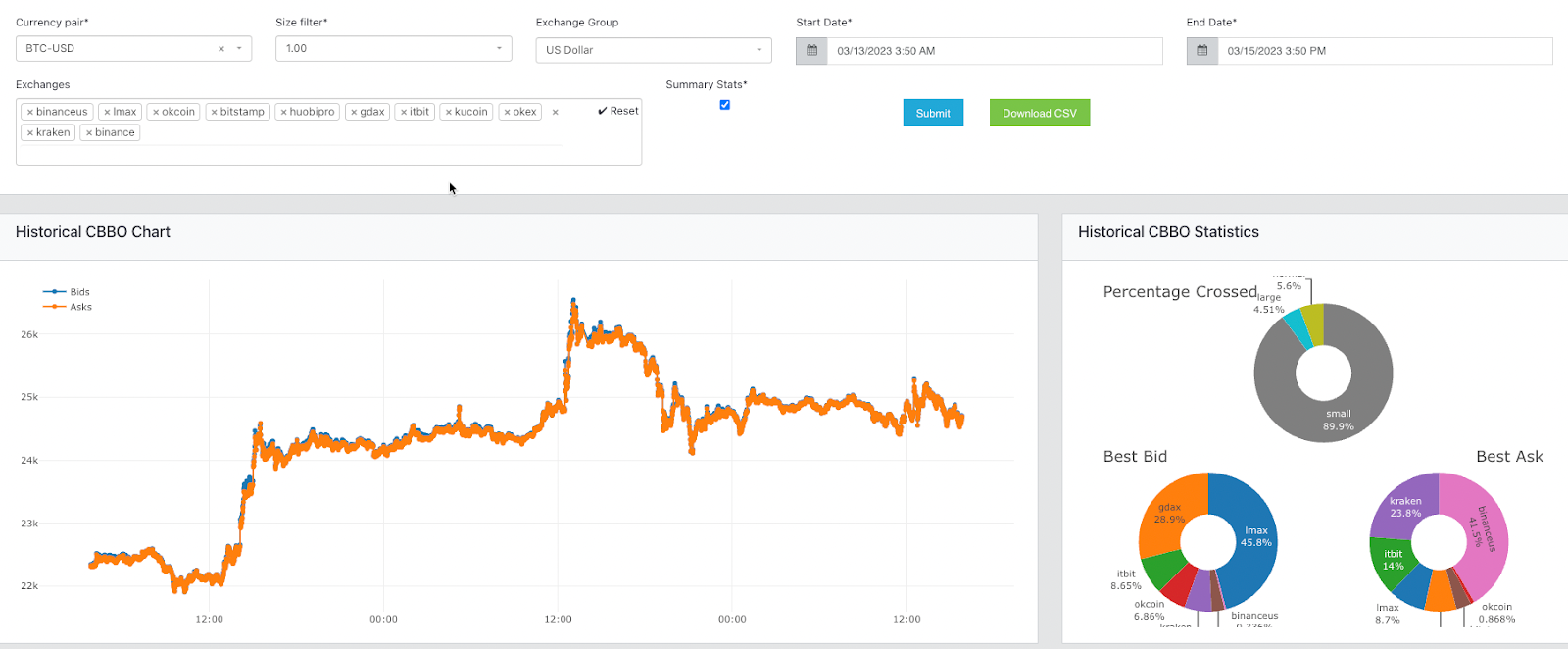
While there were some noticeable gaps between the bid and offer in the data on the morning of the 13th, when the price first moved above $24,000, the relative dispersion of the exchanges being at the best bid or best offer (shown at the right of the graphic) is quite healthy. This is important for CoinRoutes clients as our software, even if a client is limited in which exchanges they can trade on, uses the tendency of mean reversion to calculate a target price for every order placement. This methodology has served our clients well, but in this environment has added even more value than usual.
To illustrate the impact of this market structure change on our clients, we can compare the relative transaction cost analysis of Bitcoin and Ether, traded in US Dollars before and after March. Below are summary analysis of Bitcoin and Ether spot trading using our SmartPost Algorithm filtered for orders over $25k:
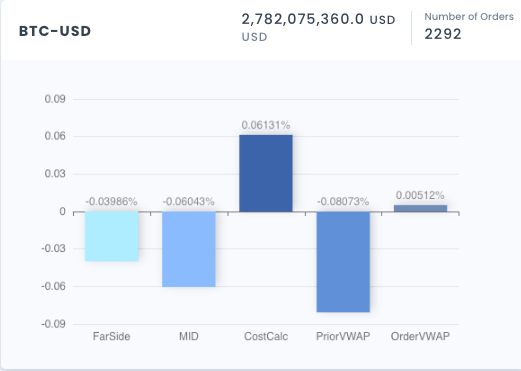
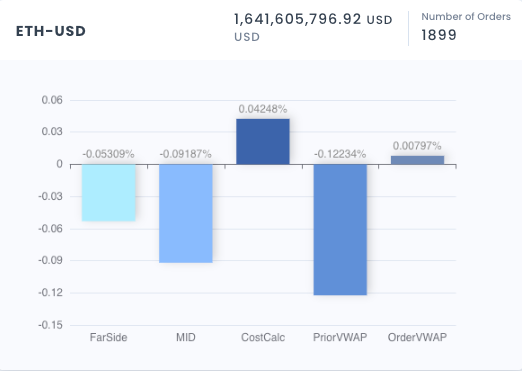
As you can see from the charts, the slippage against the far side of the market, net of exchange fees, for Bitcoin was under 4 basis points and Ether was just over 5 basis points, while the CoinRoutes algorithm outperformed optimal smart routing by over 6 basis points for Bitcoin and over 4 basis points for Ether. This is quite good performance, considering the average spread for 10 Bitcoin on most market maker platforms is over 10 basis points and the spread for buying or selling large orders (such as we measured in this sample) is considerably higher.
In March to date, while a considerably smaller sample size, the data looks much better, mostly due to the relative ability of CoinRoutes algorithms to navigate a more fragmented market.
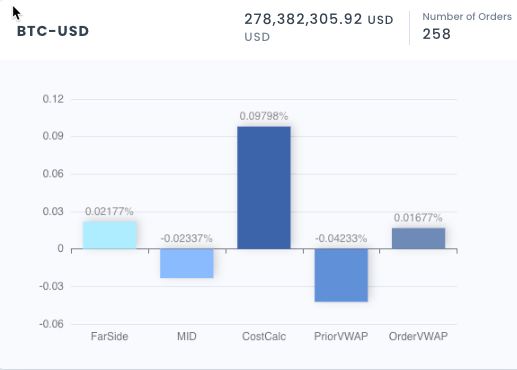
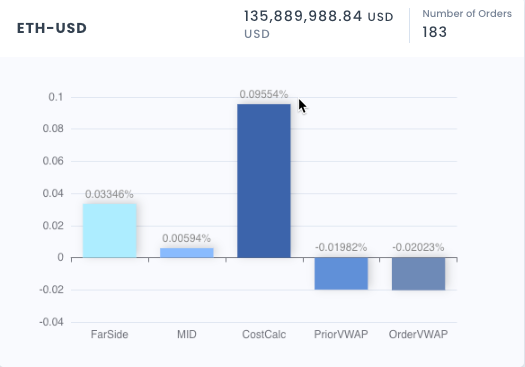
As you can see, slippage vs the far side of the market declined to just over 2 and 3 basis points, while the performance vs optimal smart routing (the CostCalc benchmark) rose to over 9.5 basis points for both pairs. While we would expect this relative outperformance to moderate somewhat, as the market continues to improve, we do expect some permanence to the effect until there is a replacement for SigNet. Further, we would expect that outperformance during weekend trading will continue , as it will be particularly difficult to transfer money due to banks being closed.
For more information contact sales@coinroutes.com or visit http://www.coinroutes.com.



